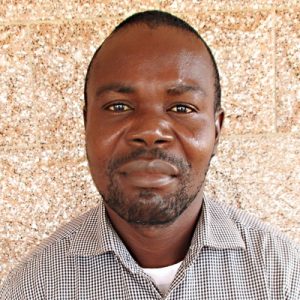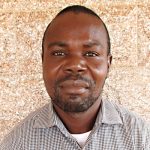September, 2019: 45 Main Motor Road, The Redeemed Christian Church of God project complete!
We are excited to share that there is a safe, reliable borehole well at The Redeemed Christian Church of God. The students and community members no longer have to rely on unsafe water to meet their daily needs. We also conducted hygiene and sanitation training, which focused on healthy practices such as handwashing and using latrines.
New Well
The drilling of this new borehole was a success, and clean water is flowing!

"I thank God for His favor of directing you people to this community to provide us with clean drinking water," said John Mcfoy.
The Process
Before the team moved to the site they consulted with the pastor of the church, the WaSH Committee, and some community people. Formal introductions were made and arrangements for their lodging determined. The church itself was their temporal lodging place and Miss Mariatu Koroma was selected to handle their cooking.
2 pits were dug next to the drill rig, 1 for the drill’s water supply and another for what was pulled back up out of the borehole. Since the community already struggles with finding enough water, we ordered a private supplier to deliver the water we needed for drilling.
The pastor, together with some members of the water committee rallied the community people to fetch water for the drilling.

Community members fetch water for drilling
Day 1 of drilling started with filling the 2 pits with water mixed with bentonite. A 4-inch carbide-tipped bit was fixed to the 5-foot-long drill stem. The mud pump was started to supply water to the drill rig and the drilling starts. During drilling, after every 5-foot length of drill stem put into the hole the team would take material samples. The bags were labeled 1, 2, 3, and so on. These are to be reviewed later to determine the aquifer locations.

The second day of drilling was meant to expand the hole and clear it of mud. The team reached a total depth of 96 feet.
The team forcefully pumped clean water into the well to clear out any mud and debris from drilling. After, filter pack was added so that the screened pipe would be protected. The temporary drilling casing was hoisted out so that we could fortify the pipes with cement.

The well was bailed by hand for 3 days before doing a yield test to verify the water quantity at a static water level of 48.8 feet.

Yield Test
With these great results, a stainless steel India MkII pump was installed. Water quality tests show that this is clean water fit for drinking!
The team arrived at the dedication site at 9:50 am. Already, the pastor, together with some members of the water committee, some members of the church, and some community members were here. However, the pastor was not ok with the number and asked that he be allowed some time to go around the community to call more people to the ceremony.

The church pastor dedicating the well
In no time, people came from different angles of the community in a celebratory mood, singing traditional songs. The venue was now in full celebration mode.
In fact, the boom box could not compete with the loud voices of the people and it had to be turned off. The voice of one Miss Fatmata was so melodious that some men who were there as observers initially, could not resist but join in the celebration. The people circled around the well while singing praises for the well.

The singing and dancing were quieted, however, reluctantly, to allow speeches from various people. Then the celebration continued. The activities under the tap included pumping water from the well, children drinking from the well, and other community members having fun around the tap area.

New Knowledge
Before any hygiene training occurred, repeated phone calls and visits were made to the committee to help them understand the challenges and lack of sanitation facilities in the community. The findings from our baseline survey were brought to the attention of the water committee to help them make the necessary adjustments before the training or drilling could commence. When all the necessary and required guidelines were met, then and only then did our team of hygiene trainers go to conduct the training.
While the team prepared themselves in terms of getting training materials ready, the pastor and the chair of the WaSH committee opted to get the people’s total involvement. On the day of training, this group ensured the venue was prepared even before the team arrived. These 2 people were also key in walking around the community to call the people to the venue for the training.

The training was held in the church where all community members, regardless of faith, were welcomed. More than 100 people attended for 3 days of training. What made the training environment even more conducive was the location of the church. This part of Benkeh is very attractive to the cool Atlantic Ocean breeze.
Training topics covered included: Handwashing and tippy tap; good and bad hygiene; disease transmission; worms and parasites; proper care of teeth; proper care of the pump; keeping the water clean; the cost recovery system; dishracks and clotheslines; the importance of toilets; keeping the latrine clean; balanced diets; diarrhea; and HIV and AIDS.

The level of participation and involvement of the attendees was very high. The training itself was naturally interactive as the attendees were involved in demonstrating hygiene and sanitation topics. Notable among them was the display of good and bad hygiene drawings. This group of people was in high spirits by asking critical questions on every topic that was discussed because they wanted to know everything and the team was very much impressed with that.
The participants discussed among themselves and later came to the conclusion that it can be easy to change their behaviors.

"Honestly, most of us in this community lack the basic hygiene education and that has always been our reason for our exposure to plenty of illnesses," said Mr. Mcfoy.
"It is very certain that this training will have a profound effect on our lives in this community."
Thank you for making all of this possible!


 Borehole Well and Hand Pump
Borehole Well and Hand Pump
 Rehabilitation Project
Rehabilitation Project





























